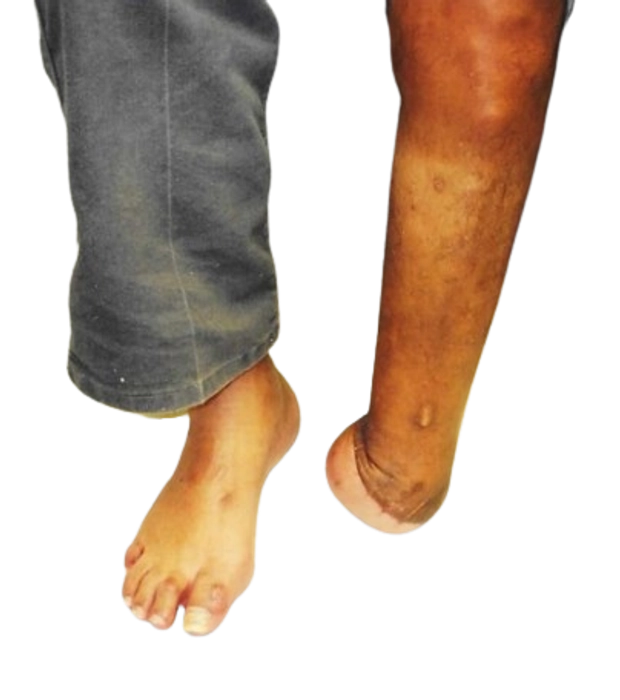Introduction
Symes amputation is a surgical procedure that involves removing the foot at the ankle joint while preserving the heel pad. This procedure is performed to address severe trauma, vascular diseases, tumors, or congenital abnormalities affecting the foot and ankle. At Dhyan Healthcare, we understand the challenges individuals face after undergoing Symes amputation and are committed to providing comprehensive care and support throughout their journey.
Indications for Symes Amputation
Symes amputation may be recommended in cases where other treatment options have failed or when there is extensive damage or disease affecting the foot and ankle, including:
- Peripheral Vascular Disease: Advanced peripheral arterial disease or severe ischemia that cannot be treated conservatively.
- Severe Trauma: Extensive injuries to the foot and ankle that cannot be repaired surgically.
- Diabetic Neuropathy: Advanced diabetic neuropathy with non-healing ulcers or infections.
- Malignant Tumors: Cancerous tumors affecting the bone or soft tissues of the foot and ankle.
Preoperative Preparation
Prior to undergoing Symes amputation, patients will undergo a thorough evaluation and preparation process, which may include:
- Medical Evaluation: Assessing overall health, fitness for surgery, and potential risks.
- Imaging Studies: X-rays, MRI, or CT scans to evaluate the extent of damage or disease.
- Consultation with Specialists: Collaboration with orthopedic surgeons, vascular surgeons, oncologists, and rehabilitation specialists to develop a comprehensive treatment plan.
- Patient Education: Providing information about the surgical procedure, expected outcomes, and postoperative rehabilitation.
Surgical Procedure
During a Symes amputation, the foot is removed at the ankle joint while preserving the heel pad. The procedure is performed under general anesthesia and typically involves the following steps:
- Incision: A surgical incision is made around the ankle joint to expose the bones and surrounding tissues.
- Bone Resection: The bones of the foot are carefully dissected and cut at the level of the ankle joint.
- Soft Tissue Management: Muscles, blood vessels, and nerves are carefully managed and preserved to optimize wound healing and prosthetic fitting.
- Closure: The incision is closed with sutures or staples, and a sterile dressing is applied.
Postoperative Care and Rehabilitation
After Symes amputation surgery, patients require comprehensive postoperative care and rehabilitation to optimize recovery and functional outcomes:
- Pain Management: Medications and other pain management techniques are utilized to control postoperative pain and discomfort.
- Wound Care: Proper wound care and monitoring are essential to prevent infection and promote healing.
- Physical Therapy: Rehabilitation begins soon after surgery to improve strength, mobility, and function.
- Prosthetic Fitting: Custom prosthetic devices are designed and fitted to help patients regain mobility and independence.
- Psychological Support: Counseling and support services are available to address emotional and psychological challenges associated with limb loss.
Lifestyle and Adaptations
Living with Symes amputation requires adjustments and adaptations to daily life activities. Patients may benefit from:
- Assistive Devices: Prosthetic devices, mobility aids, such as crutches or walkers, and adaptive equipment may be utilized to improve mobility and function.
- Home Modifications: Making modifications to the home environment to improve accessibility and safety.
- Peer Support: Connecting with other individuals who have undergone similar surgeries for support and encouragement.
- Regular Follow-up: Ongoing medical monitoring and follow-up appointments to address any issues or concerns.
Conclusion
Symes amputation is a life-altering procedure that presents significant physical, emotional, and psychological challenges. At Dhyan Healthcare, we are committed to providing comprehensive care and support to individuals undergoing Symes amputation surgery, from preoperative preparation to postoperative rehabilitation and beyond.
For more information or to schedule a consultation, please visit our website or contact our clinic. Our team of experienced healthcare professionals is here to guide you through every step of your journey towards recovery and improved quality of life.


